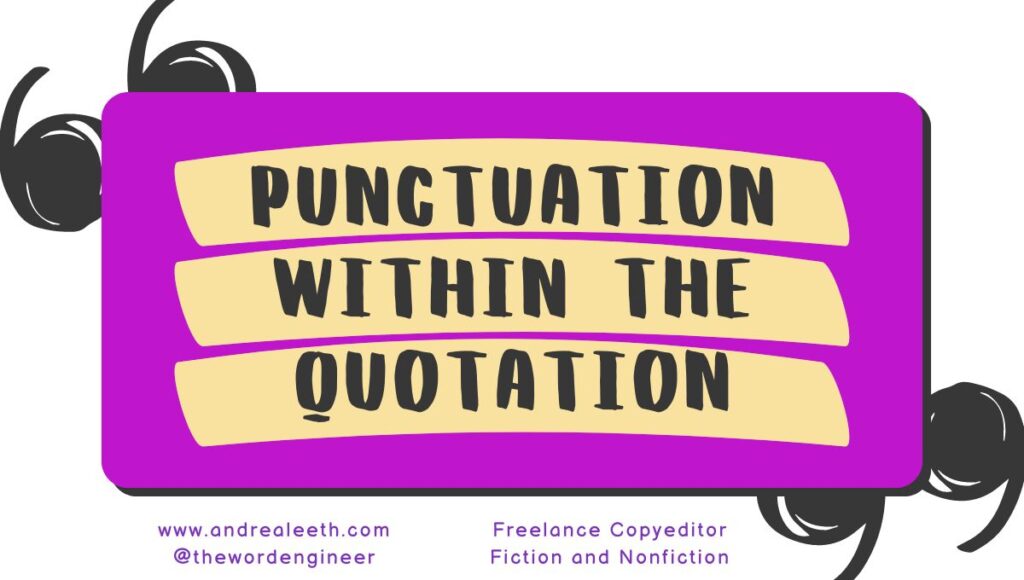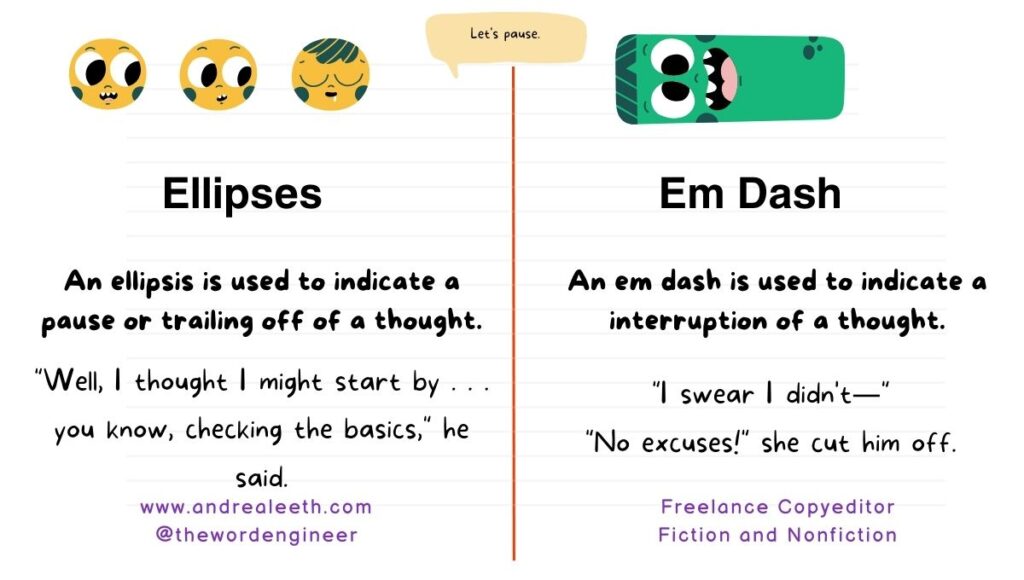Ever read a book where the dialogue felt like a tangled mess? You know, where you couldn’t tell who was talking, or it just didn’t flow right? In this post, I cover everything you need to know on how to format dialogue in a novel.
Last week I finished a novella by a self-published author on my Kindle. Although the book could have been edited a bit more, that didn’t take away from the storyline, which held my interest from the get-go.
However, one thing that really got on my nerves: the dialogue. The author often included action beats for the character who wasn’t speaking, on the same line as the character who was actually speaking. This had me pausing mid-sentence, scratching my head, and muttering, “Wait, who’s talking here?” It threw me off track more than a few times, but I did read the whole thing, though now I’m hesitate to buy the next book in the 5-part series. I don’t really want to go through that again.
I don’t want your readers to have to stop and say, “Wait, who’s talking here?” So, let’s get into the steps to help you understand how to format your dialogue in your novel. I cover everything you need to know regarding dialogue tags, action beats, dialogue punctuation, examples of dialogue with grammar, as well as showing a sample from a well-known book. (Note: The content below is for USA-based authors; it may be different in your country.)
1. What’s a Dialogue Tag and an Action Beat?
Dialogue tags and action beats are the bread and butter of dialogue formatting. Dialogue tags (he said, she whispered, he yells) attribute speech to specific characters, while action beats add movement and context to the conversation. Keep them clear and concise to avoid confusion. Here are a few examples:
- Dialogue Tag: “How was your run, Bill?” she asks. (Yes)
- Action Beat: Bill wipes the sweat from his forehead. “It was rough, but I got it done.” (Yes)
- Dialogue Tag: Bill says, “It was rough, but I got it done.” (Yes)
Another common thing I see with dialogue is including an action beat and a dialogue tag, like I have in the example below. This would be considered a form of redundancy because the action beat already signifies to the reader that Bill is the speaker here. Using both an action beat and a dialogue tag is not needed.
Bill wipes the sweat from his forehead. Bill says, “It was rough, but I got it done.”(No)
2. Where Does the Punctuation Go?

Punctuation goes inside the quotation marks: commas, periods, question marks, and exclamation points. Though there is one exception with dialogue tags and commas, which you’ll see below. Let’s look at punctuating dialogue tags and action beats accordingly:
- “How was your run, Bill?” she asks. (Yes. The question mark goes inside the quotes. Also note that “she” is lowercase because this is 1 sentence.)
- Bill says, “It was rough, but I got it done.” (Yes. Here is the exception with dialogue tags and commas when a dialogue tag starts the sentence; the initial comma goes outside the quotes. But the period inside the quotes finishes the sentence – this is 1 sentence.)
- “It was rough, but I got it done,” Bill says. (Yes. The comma goes inside the quotes – this is 1 sentence.)
- Bill wipes the sweat from his forehead. “It was rough, but I got it done.” (Yes. For action beats, a period is used, not a comma – this is 2 sentences.)
Bill wipes the sweat from his forehead, “It was rough, but I got it done.“(No. A period is used with actions beats, not a comma – this is 1 sentence.)
3. Every Time a New Character Talks, a New Line Is Started.
Every time a new character speaks, start a new line. This simple trick helps readers follow the flow of conversation and prevents dialogue from becoming a tangled mess.
“How was your run, Bill?” she asks. (Character 1)
Bill wipes the sweat from his forehead. “It was rough, but I got it done.” (Character 2)
“That’s great, Bill.” (Character 1)
“Yes.” (Character 2)
Note that the last two lines don’t use dialogue tags or action beats. You don’t need to use them every time someone speaks if it’s clear who is talking.
4. Dialogue Should Be Indented, Except at the Start of a New Chapter or Scene Break.
Indentation is standard in dialogue formatting (as well as narration), except for at the start of a new chapter or at the start of a scene break. Now, I’ve worked with indie authors who prefer not to have their books indented at all. It’s more of a personal preference for the author, but the traditional way—with indentations—is widely recognized by readers.
5. When to Use Single Quotation Marks?
When a character quotes someone else within their dialogue, use single quotation marks to avoid confusion. This technique helps readers keep track of who’s saying what. See example below:
- “When I asked Bill how his run was, he said, ‘It was rough, but I got it done.‘ I told him that was great.” (From the previous example, you’ll see that Character 1 is repeating what Bill told her. This is reflected by using single quote marks within double quotation marks.)
6. What If a Character Has a Long Monologue?
If a character has a long monologue, remember this golden rule: omit closing quotations at the end of each paragraph, but begin each subsequent paragraph with an opening quotation mark. This signals to readers that the monologue is continuous and uninterrupted. See the example below that I used in my YouTube video:
“This is an example of a really long monologue of a character. Do you remember the difference between a dialogue tag and an action beat? Are you sure? Drop the definition of what they are and how they differ in dialogue in the comment section. (No closing quotation mark, the speaker is still talking.)
“Wow, this character is still talking. Do you remember where the punctuation goes when formatting dialogue? Add that to your comment below, you know, just to make sure you remember when you’re writing the dialogue in your story. (No closing quotation mark, the speaker is still talking.)
“Sheesh, this monologue is sooo long. But one last thing, what do you remember about indentions in dialogue? And oh yeah, don’t forget to like, comment, and subscribe to the channel.”(Finally, a closing quotation mark now that the speaker is finished talking.)
7. What Not to Do in Your Dialogue
Samples from Alice’s Adventures in Wonderland by Lewis Carroll (Source: Project Gutenberg)
The examples below are illustrations of dialogue formatting in real manuscripts that I’ve received earlier in my career as a copyeditor.
This is a No!
The Queen: Can you play croquet?
Alice: Yes!
The Queen: Come on, then!
The White Rabbit: It’s … it’s a very fine day!
Alice: Very. Where’s the Duchess?
The White Rabbit: Hush! Hush! She’s under sentence of execution.
Alice: What for?
The White Rabbit: She boxed the Queen’s ears—
The Queen: Get to your places!
In the draft stage of your manuscript, it’s okay for the dialogue to be structured like this. However, before sending it to an editor, the dialogue should include the quotation marks, dialogue tags, and action beats.
This is a No!
“Can you play croquet?” shouted the Queen. The question was evidently meant for Alice. “Yes!” said Alice loudly. “Come on, then!” roared the Queen. “It’s … it’s a very fine day!” said a timid voice to Alice. She was walking by the White Rabbit, who was peeping anxiously into her face. “Very,” said Alice. “Where’s the Duchess?” “Hush! Hush!” said the Rabbit. “She’s under sentence of execution.” “What for?” said Alice. “She boxed the Queen’s ears—” the Rabbit began. “Get to your places!” shouted the Queen in a voice of thunder …
It’s great that the author has included the quotation marks, dialogue tags, and action beats. However, all the dialogue is jumbled together in one paragraph. Although I’m editor, I’m also a reader and this is confusing, even for me, an editor. Please do yourself and your editor (me) a favor and ensure each time a new character speaks, a new line is created.
8. Here’s How Your Dialogue Should Look By the Time It Goes to the Copyediting Stage.
“Can you play croquet?” shouted the Queen. The question was evidently meant for Alice.
“Yes!” said Alice loudly.
“Come on, then!” roared the Queen.
“It’s . . . it’s a very fine day!” said a timid voice to Alice. She was walking by the White Rabbit, who was peeping anxiously into her face.
“Very,” said Alice. “Where’s the Duchess?”
“Hush! Hush!” said the Rabbit. “She’s under sentence of execution.”
“What for?” said Alice.
“She boxed the Queen’s ears—” the Rabbit began.
“Get to your places!” shouted the Queen in a voice of thunder . . .
Let’s highlight a couple dynamic aspects to use in dialogue.

- Ellipses ( . . . ) aka drama dots: This is used when you want to show that a character has trailed off in speech or is stuttering. Ellipses are spaced either side.
- Em Dash (—): This is used when you want to show that a character has been interrupted or cut off by another character. Em dashes are not spaced either side—they should connect to the words.
Dialogue is more than just words on a page; it’s the heartbeat of your story, the rhythm that propels readers forward, and the voice that brings your characters to life. Knowing how to properly format dialogue helps you ensure that it is clear and coherent in your narrative and helps you create an immersive reading experience for your audience.
As begin writing your dialogue, remember to strive for clarity, embrace the power of punctuation, and never underestimate the importance of proper dialogue formatting. Your characters—and your readers—will thank you for it.
Are you in need of a professional editor? Reach out to me here to see if we’d be a great match to work together.
Connect with me on the socials: IG, Threads, LinkedIn, YouTube.
